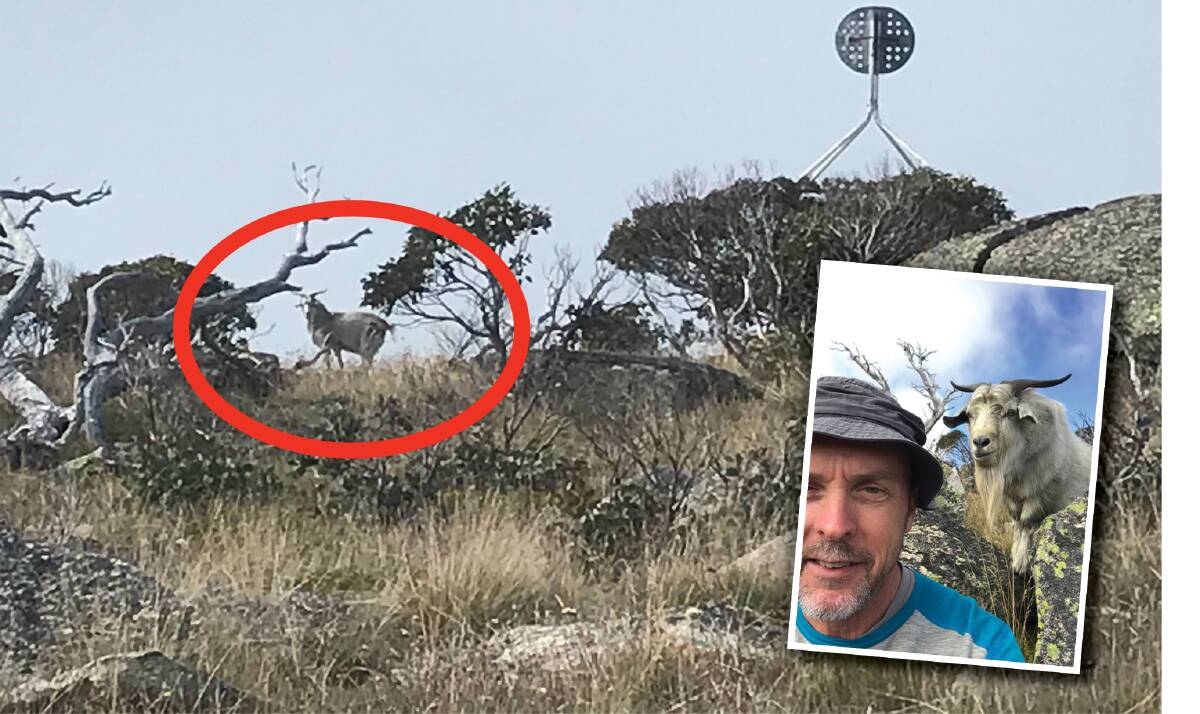
Clambering up Mt Bimberi, the ACT's highest mountain, is no easy feat so on reaching the summit last weekend bushwalker Geoffrey Volk stopped for a breather and a bite to eat.
After finding "a nice sunny corner amongst some boulders for lunch", Geoff sensed a movement behind - and looked around to eyeball a large billy goat breathing down his neck; literally.
Geoff's first reaction was to stand up and protect his lunch, but when he realised the goat was "just being inquisitive and not a threat" he pulled out his phone and fired off a selfie.
"It's not the best shot as it was rushed but it was an opportunity I couldn't miss," reveals the Wollongong-based high school teacher who loves exploring the high country of Namadgi and Kosciuszko national parks.
Before embarking on his descent off the 1913-metre peak, Geoff flicked through the bushwalkers' logbook to see if any other hikers had made note of the goat. "Despite an entry every couple of days over the last few months, there was no mention of the goat whatsoever," he reports.
Geoff's unexpected encounter astounded park rangers. Mark Sweaney, manager of the Invasive Animals Programs with ACT Parks, reports "it's created quite a stir as there hasn't been any reports of feral goats in Namadgi for many years".
"Last year when we undertook a couple of thermal camera-assisted aerial shoots of invasive large herbivores in Namadgi not one single goat showed up, so we are really surprised about Geoff's encounter," he explains.
Meanwhile, if anyone is going to see a goat on the ground in Namadgi it would be Canberra bushwalking luminary John Evans who over the last 20 years has walked more kilometres in Namadgi than anyone else by a country mile. "Although I've seen plenty of deer, I've never once seen a goat in Namadgi, including Bimberi," reveals John.
Ecologist Don Fletcher, formerly with ACT Parks, reveals the ACT once did have a feral goat problem but that was back in the 1970s and 1980s. "There were hundreds in Namadgi and on the Tidbinbilla Range," he reveals, adding "aerial shooting removed the bulk of them humanely, and natural predation by dingoes (which are not controlled in a small central area of Namadgi) has prevented population recovery despite occasional small incursions from across the border."
Geoff's encounter is also remarkable for just how close the goat was to him. "It was almost as if it was tame," he recalls. "I think it was after my food, but I never felt threatened."
Mark Sweaney believes the most likely scenario is that the goat must have come from the NSW side of the border (Bimberi is right on the border) but is equally surprised about how tame it was.
"It exhibited very unusual behaviour for a feral," he explains. "Perhaps it had never seen a person before or perhaps it was an escaped pet or purposefully let loose.
"Of course, both of those are slim possibilities given the remoteness of the Bimberi wilderness and lack of access to nearby areas by vehicle."
Has anyone else spotted the Bimberi goat? If so, I'd love to hear from you.
Goats in suburbia
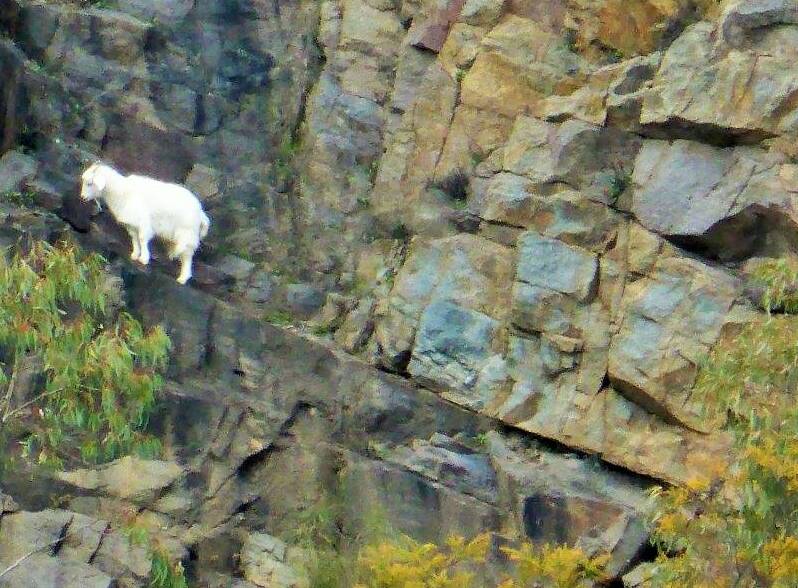
One place in the ACT where there's been a goat living for many years is Mugga Mugga quarry, where its sheer cliffs and large rocky outcrops provide an ideal location for goats to hang out.
This column reported on the elusive bovid back in 2018 and continues to receive a steady stream of sightings of the billy goat which climbs up and down the near-vertical stone walls.
With the quarry long closed and now used as a waste management facility, most reports come for truck drivers like Kirsty Lee Morrison who "carts dirt into the former quarry" and "regularly sees the goat".
Apparently, some of Kirsty's fellow drivers have nicknamed the lone white goat after a prominent politician who is seeking re-election in a couple of weeks. Sorry folks, being apolitical, this column will resist revealing his name.
Bilbo the gallivanting goat
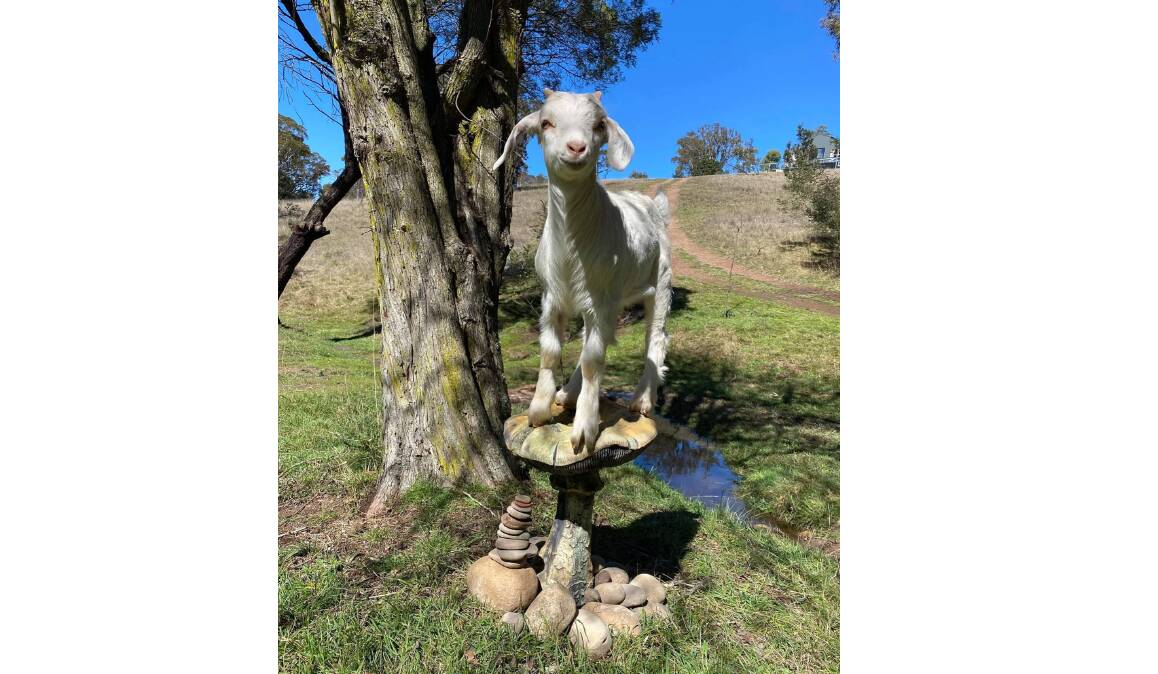
While the Bimberi goat is unlikely to be an escaped pet, goats are becoming increasingly popular as backyard companions, especially in the rural fringes of the ACT.
These include Matthew Kirwood and his partner Laura Grace who harbour a menagerie of rescue animals on their property near Mt Fairy, just north-east of Bungendore, including "five wild brumbies, four super friendly pet goats, two overly friendly pet sheep who don't know they're sheep, and an emu".
The pair have captured some wonderfully idiosyncratic photos of Bilbo, the baby male goat, including one of the inquisitive kid standing sentinel on a giant mushroom sculpture and even attempting to hitch a ride on Harley, the very accommodating emu.
Over the years, this column has also received a significant number of photos of goats, usually pets, standing or sitting spread-eagled on car bonnets, including this one featuring the recently deceased "Brian the gregarious goat of Googong" who for several years had a peculiar penchant for jumping on Bede McFadden's car and striking a pose.
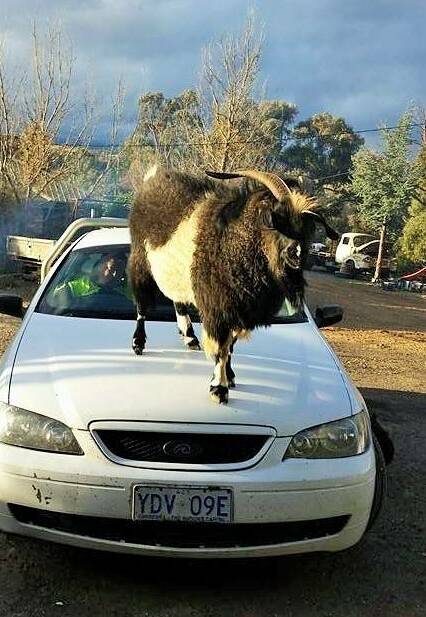
"I like to think he was domesticated but he just did what he wanted to when he wanted," says Bede, who had to regularly resort to "gently poking him off the bonnet with a broom" to drive his car to work.
Richard Holgate, who admits to "buffing some cloven hoof marks" out of his bonnet, assumes "they just liked climbing, and in a domestic setting sometimes a car is the only/easiest thing to climb".
A weeding machine on four legs
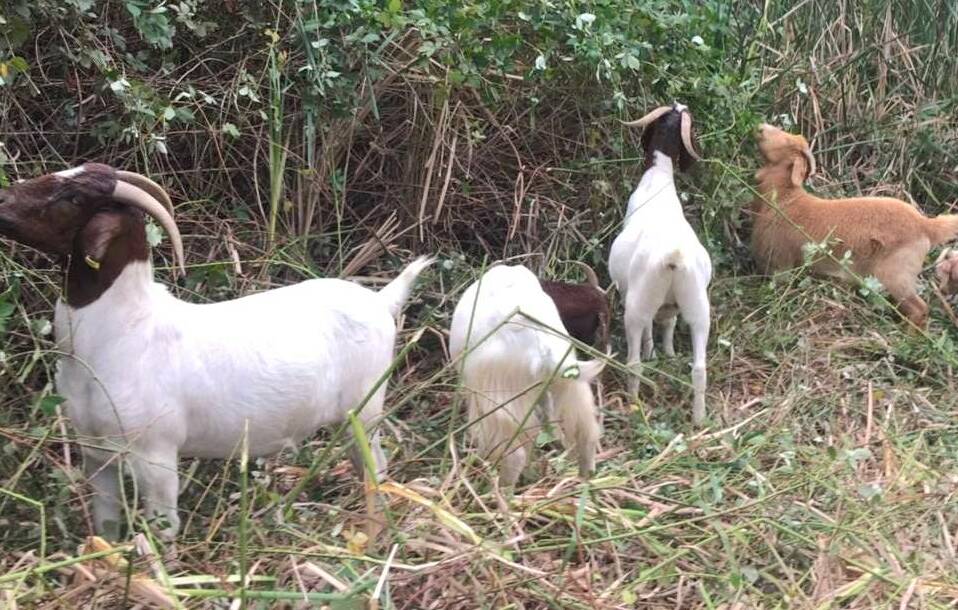
We all know goats eat just about anything, and this trait is increasingly being harnessed by conservationists and land managers to remove woody weeds in the ACT, including in the Australian National Botanic Gardens.
Following a successful trial in 2019, last month the botanic gardens recruited a herd of goats to remove (eat) problem weeds in tricky hard-to-reach areas without the use of herbicides and chemicals.
"We brought them in this time mostly because of how out of control problem weeds became after the two years of rain and favourable growing conditions," reveals a spokesperson for the gardens. "The goats were fenced in at carefully chosen sites towards the top of the gardens to ensure no risk of losing any important plants from the collection."
Once the goats have done their bit, horticulturalists have much better access to the sites, enabling them to prune, tidy and remove any resulting regrowth, and monitor the sites much more safely.
As for their droppings, apparently weed seeds are broken down in the gut of the goat so they don't spread. Phew.
Goat facts
- Female goats are referred to as does or nannies, males are called bucks or billies, and juvenile goats of both sexes are called kids. Castrated males are called wethers.
- Goats are one of the oldest domesticated species of animal on the planet. According to archaeological evidence, goat domestication occurred in Iran more than 10,000 years ago. No kidding.
- Unlike in NSW, to keep a domestic goat in the ACT it needs to be registered with a plan to prevent it becoming feral. There are currently 40 domestic goats on the register.
WHERE IN THE REGION?

Rating: Easy
Clue: The road south
How to enter: Email your guess along with your name and suburb to tym@iinet.net.au. The first correct email sent after 10am, Saturday May 7 wins a double pass to Dendy, the Home of Quality Cinema.
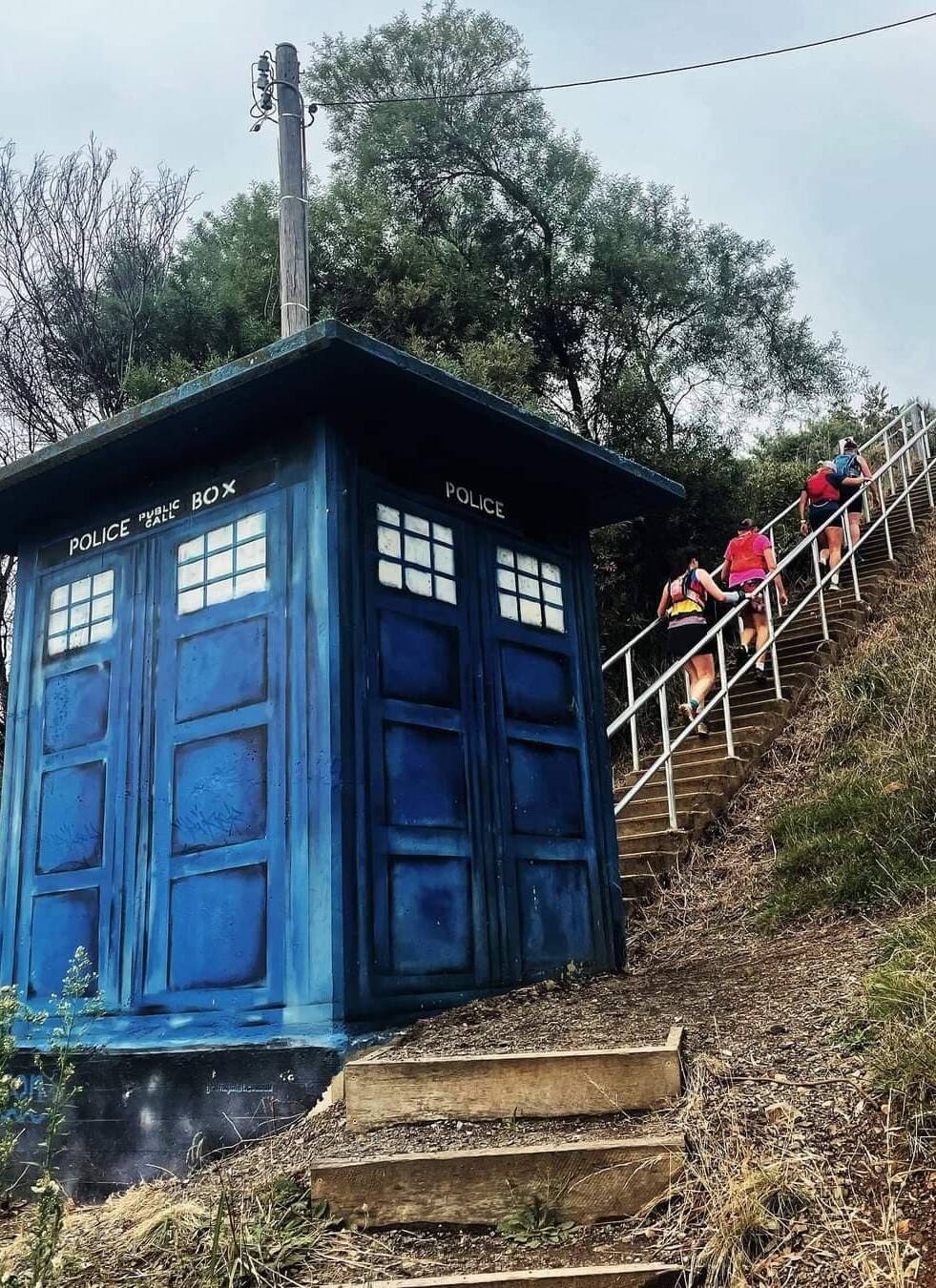
Last week: Congratulations to Jonathan Miller of Curtin who was first to correctly identify last week's photo as the water pump painted as the TARDIS, Dr Who's preferred method of transport, on Red Hill located just below the Lookout. Jonathan beat an avalanche of readers to the prize, including many like Theresa Orme and Kanwar Sidhu of Griffith who walk past it regularly on their daily constitutionals. The clue of "regenerators" referred to the Red Hill Regenerators, a volunteer park care group that looks after the area.
Escargots Gratinés, anyone?
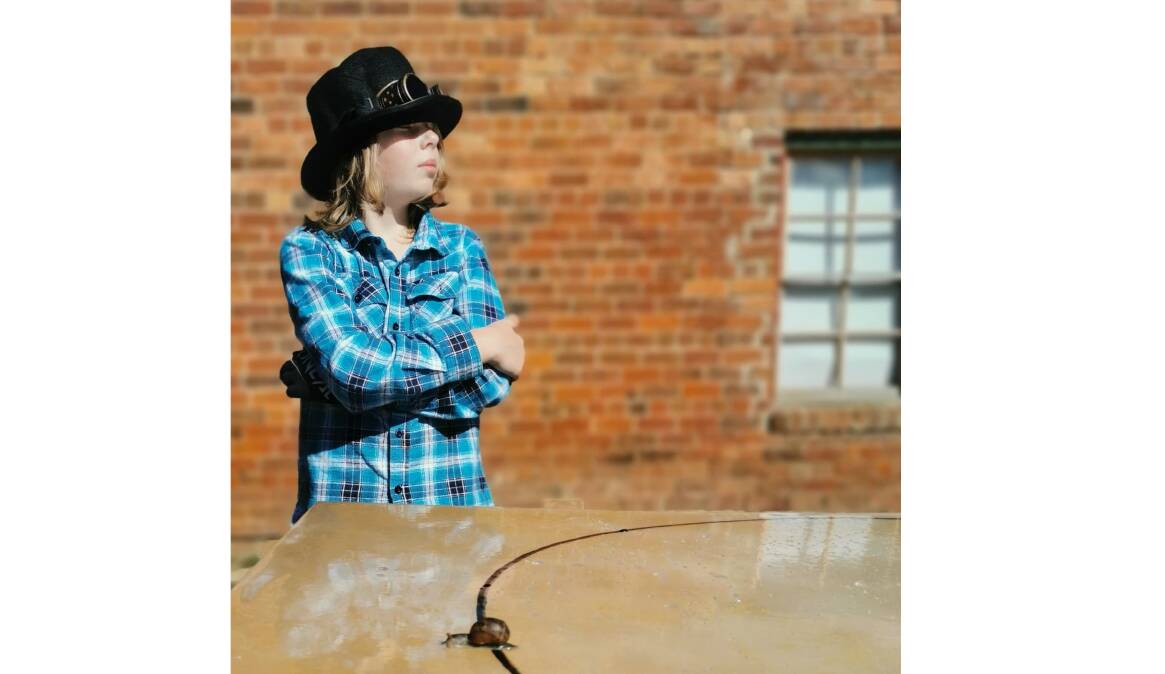
Months of training for Kambah snail wrangler Gus Lilley accounted for nought at last weekend's much anticipated snail race at Nimmitabel's Steampunk @ Altitude Festival when the 10-year-old's prized snail snagged 4th place out of a field of four. While Gus was "gutted" with the result, his mum Rose Higgins was more philosophical about the result. "Sure, Gus didn't jag a podium finish, but it was an improvement on last year when his snail fell asleep and didn't even finish."
A word of warning for Kambah residents: put fences up around your veggie patches for Gus is already talent scouting for next year. And before you ask, "but won't the snail die before the race in 12 months?", it's a common misconception that garden snails only live for a few months. The average life expectancy is actually several years, with reports of some in captivity living for up to 14 years!
CONTACT TIM: Email: tym@iinet.net.au or Twitter: @TimYowie or write c/- The Canberra Times, GPO 606 Canberra, ACT, 2601







